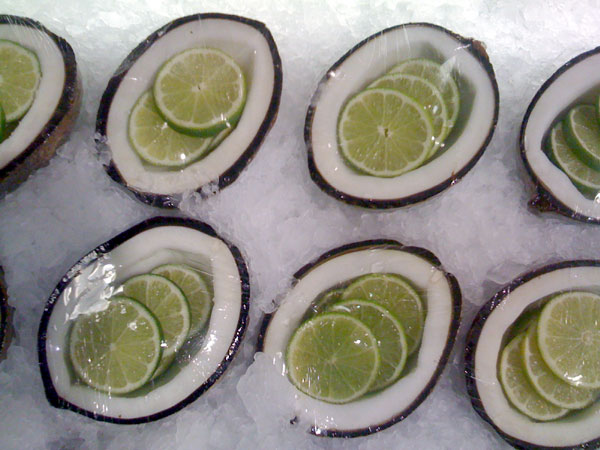
Here comes the sun…
Spring is a time to retire the heavy stews that kept away the winter’s chill and celebrate the season of the sandwich and nothing says comfort food like pimento cheese. Now if your experience with pimento cheese involves picking up a pot of the processed grocery store stuff, then I can understand your lack of enthusiasm, store-bought spreads are like the movie adaptation of a book, they often share a name and precious little else. Likewise, if you are reading this north of the Mason-Dixon line then there is a good chance you are unaware of this delicacy and therefore “don’t know what you are missing”. It seems hard to believe, to anyone raised in the South, that this ubiquitous potluck dinner/church social/picnic/afternoon tea/school lunch staple is a “regional” dish. To the rest of you I am preaching to the choir, but stick with me and maybe I’ll find some scripture you haven’t heard yet.
It is hard to explain something as simple as Pimento Cheese. On the surface it is simply a cheese based spread with pimento peppers added, but then, on the surface, barbeque is simply meat cooked slowly over a fire and cornbread is a cake made with cornmeal. The statements are all true, but they don’t tell the whole story. Just like barbeque and cornbread, pimento cheese is made with hundreds of variations in technique and ingredients with every region giving it’s own spin on this treat. Those variations are part of the charm of pimento cheese, whether you go for a straightforward “government cheese”, mayonnaise and pimento spread on Wonder Bread or a gourmet mixture featuring imported cheeses, minced garlic, onions and watercress on soda biscuits at tea time, you are part of a Southern culinary tradition that ranges from the farm fields of Appalachia all the way to the manicured greens of the Masters Golf Tournament, where Pimento Cheese sandwiches are a time-honored part of the experience.

Well, I declare…
I think it is important here to get some facts together. There has been some confusion regarding the word pimento. In this case, we are talking about a pepper and I daresay, one you are already familiar with, here is what Wikipedia has to say about it:
The pimento, pimiento, or cherry pepper is a variety of large, red, heart-shaped chili pepper (Capsicum annuum) that measures 7 to 10 cm (3 to 4 inches) long and 5 to 7 cm (2 to 3 inches) wide. The flesh of the pimento is sweet, succulent and more aromatic than that of the red bell pepper. Some varieties of the pimento type are hot, including the Floral Gem and Santa Fe Grande varieties. Pimento is a Portuguese word for “bell pepper”, while pimenta refers both to chili peppers and to black peppercorns. It is typically used fresh, or pickled and jarred.
These sweet pimento peppers are also the familiar red stuffing found in prepared Spanish green olives. The pimento was originally cut into small pieces and hand stuffed into fresh green olives to complement the strong flavor of the olive.
See, it is the red stuff in the olive in James Bond’s Martini, I told you that you were already familiar with it. Now, the confusion comes from the fact that pimento peppers share their name with a tree, specifically the Pimento tree of Jamaica, also known as allspice, that gives Jerk seasoning it’s flavor. So there you go, two very different ingredients both called pimento, used in totally different ways to give unique flavor to very different foods, that share a name, kind of fitting, huh?
Keeping with that theme, trying to find the origins of this spread has been a little tougher, once again I have found a couple of very different explanations for the prominence of this treat as a Southern staple. The first story goes that rural Southeastern cheeses, were typically softer “white” varieties, that are simpler to make on the farm, and that pimento cheese is made with a harder Northern yellow cheddar that had to be brought in from elsewhere. Therefore, to serve this spread at a party was a bit ostentatious, it showed that you could afford to serve “imported” store-bought cheese. The other side of this coin tells that this recipe is an attempt to make depression era “government cheese” more palatable, by mixing it with mayo and pimentos to make it softer and give it more flavor, much like the local cheeses of the area. So you have two explanations of why this spread was served, from opposite ends of the social spectrum, wildly different, but perfectly plausible. Well, at least as plausible as the fact that apparently pimento cheese is also a popular dish in the Philippines, but I digress.
I am going to share two vastly different riffs on the PC groove. First, my version of a recipe I have seen touted as “The World’s Best Pimento Cheese Recipe” followed by my own Grandma’s tried and true recipe. They are about as far apart as you can get, but they are both wonderful in their own ways and they show the culinary evolution of this great dish.
We’ll start with my “gourmet” variation on TWBPC, I took the basic recipe and selected high-end ingredients to make it extra special.

Hunger Among Plenty
The Monkeyman’s High-Brow Pimento Cheese
(Suitable for framing)
1/4 cup of mayonnaise, I use Duke’s, the best mayo on the market, period.
1- 3 oz. package of American Neufchatel, softened. You can use cream cheese, but this tastes better and is better for you.
1.5 teaspoon of minced garlic or 3 cloves, minced
1/4 cup of chopped parsley
1/2 teaspoon of hot sauce, I use Captain Rodney’s Corazon del Fuego Hot Sauce.
1- 2 oz jar of diced pimentos, undrained
3 cups of finely shredded sharp cheddar cheese, this is where you can really make you PC special. I am partial to Kerrygold cheese, so I take 2 cups of their aged Reserve Cheddar and mix it with one cup of their Ivernia, this is an Irish cheese lover’s dream
1 cup of roasted pecan chips, I take whole pecans and toast them in the oven, before chopping them up with a couple of quick bursts in the coffee grinder. Don’t chop too much though or you will have pecan meal.
Combine mayonnaise, neufchatel, garlic, parsley and hot sauce in food processor and process until smooth. Add pimentos, cheddar/ ivernia blend and pecans chips and mix well. Cover and refrigerate overnight so the flavors can blend.

More ingredients + More steps = Increased Complexity
To really tart this one up while keeping true to it’s Southern roots you can serve it on fresh from the oven beaten biscuits. Hardly anyone takes the time to make beaten biscuits anymore and it is a shame, because they are mighty tasty, and they bear little resemblance to the biscuits we think of today. Here is how Bill Neal describes them in his book, Biscuits, Spoonbread and Sweet Potato Pie:
“Beaten biscuits are, like grits, very much of a mystery to the uninitiated. They may be the forerunner of the modern raised biscuit, but these chewy, unleavened morsels resemble more the hard tack produced by early European bakers for armies and navies than anything else served up in the modern South. At the most traditional fancy parties and weddings, biscuits no bigger than a quarter are invariably served up with baked, cured ham sliced as thin as imaginable sandwiched inside and spiked with mustard. Otherwise, beaten biscuits are rarely seen anymore. They sound harder to make than they are…those who enjoy a physical relationship with their doughs should be in heaven here. There is no getting around the activity. Fifteen minutes of heavy, consistent abuse is the minimum. You can use a rolling pin, a hammer, the side of an axe; whatever, it must be heavy. When properly beaten, the dough will blister at each blow. it will develop a strange plastic quality and be smoother than any other bread dough you have ever seen…The biscuits, when done, will be dry throughout, yet soft in the middle.”
So there you go, a truly wonderful, gourmet pimento cheese, suitable for company. Now to the other side of the coin, Grandma’s Church Social Pimento Cheese. After spending your time at Whole Foods looking for the ingredients to my recipe, the shopping list on this one is going to seem awfully simple, but you should be able to get what you want at any grocery and make a whole batch in a matter of minutes. Don’t let the simplicity fool you, though. I don’t know how many platters of little sourdough finger sandwiches made with this golden treasure have been served at picnics, potlucks and church socials across the county, and I have never seen a single leftover. This recipe is much sought after and is even used by a couple of local delis as the crown jewel of pimento cheeses.
Grandma’s Church Social Pimento Cheese
1 lb. of Velveeta. Yes, I said Velveeta. Yes, I know it isn’t even really cheese, it is technically a “pasteurized processed cheese food”. Yes, I know that it has become one of the symbols of what is wrong with the US food industry. And yes, as much as I would like to maintain my usual cheese snobbery, it actually tastes pretty good, just don’t look at the ingredient list.
3/4 to 1 cup of Mayonnaise, Grandma usually chooses Hellmann’s, but I have seen her use Kraft as well.
1- 4 oz. Jar of Pimentos, undrained. Here is where she beats us all, instead of buying the little tins at the grocery, she grows her own.
Grate the entire block of Velveeta into a large bowl, add mayonnaise and pimentos, mix well. Cover and refrigerate for 4-6 hours and you are done.

Could it be simpler?
I told you it was easy and I did not lie. Well, now I am telling you it is awfully good. So you can go my route, hunting all over for occasionally hard-to-find ingredients, spending time roasting pecans and chopping and mincing, etc. or you could make Grandma’s Pimento Pasteurized Proccessed Cheese Food, and have time to read a comic book. On top of that you can make several pounds of Grandma’s for about the same price as 2/3 of the cheese used in mine. Here is the kicker, if you take Grandma’s and spread it on her homemade sourdough bread, slice it into triangles and add a little garnish, people will choose it 2 to 1 over my gourmet recipe. Even those who claim to be more cultured, folks who would walk out of the house if they thought it contained Velveeta or non-electronic Spam, will rave over these cute little tea sandwiches and beg for the recipe. For my own tastes, there is nothing better than Grandma’s PC on her homemade sourdough bread, topped with a couple of her homemade sweet pickles. If you can’t convince her to share her pickles, Bainbridge Sweet n’ Crisp Pickles are an acceptable substitute. It is also pretty good on a plain old saltine cracker, but don’t tell anyone I said so.
So there you go, a tale of two pimento cheeses, one is a needlessly complex mixture of many simple ingredients, the other a simple mixture of few ingredients, including an overly complex “pasteurized processed cheese food”. Do yourself a favor and try one or both of these recipes, you will be glad you did. On a warm, Spring Sunday afternoon they are a little slice of heaven, now that’s good eating.

Mmmm, mmmm good!
Hi, cool post. I have been wondering about this topic,so thanks for writing.